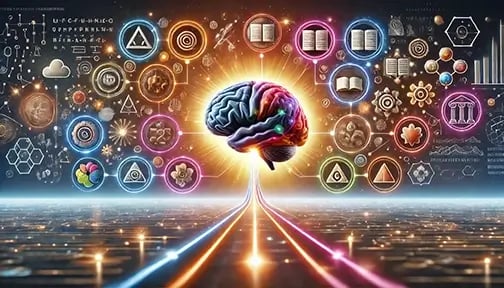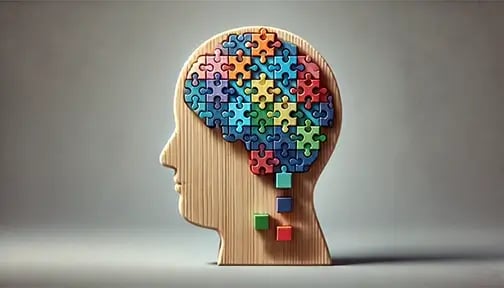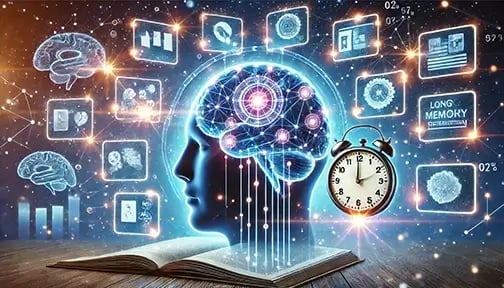Learning and remembering new information can be challenging, but Mnemonic Devices make it easier. These memory-enhancing techniques transform abstract facts into engaging, easy-to-recall associations. Whether you’re a student, teacher, or professional, understanding this system of memorization can help you retain information more efficiently.
In this post, we’ll explore how the systems work, why they are effective, and practical ways to apply them in everyday learning. By the end, you’ll have powerful tools to help you or your students improve memory retention and recall.
How They Improve Memory
The human brain is wired to recognize patterns, recall visual images, and retain information linked to emotions. Mnemonic Devices leverage these natural abilities by creating strong mental connections.
These techniques work by:
Linking new information to familiar concepts
Using visual imagery to create strong mental impressions
Breaking down large amounts of information into manageable chunks
Incorporating humor, rhymes, or movement to engage multiple senses
Whether you are learning a new language, studying for an exam, or delivering a speech, this method can help you retain key details over time.
Research suggests that this system not only enhance memory but also improve comprehension by allowing learners to form meaningful connections with the material. This method is widely used in education, public speaking, and language acquisition, proving that memory techniques go beyond simple rote memorization.
Types of Mnemonic Devices
There are many different types that can be implemented, each catering to various learning styles. Here are some of the most effective methods:
1. Acronyms and Acrostics
Acronyms form a new word using the first letters of a phrase, while acrostics create a memorable sentence using the same letters.
✅ Example (Acronym):
To remember the Great Lakes (Huron, Ontario, Michigan, Erie, and Superior), use HOMES.
✅ Example (Acrostic):
For the order of operations in math (Parentheses, Exponents, Multiplication, Division, Addition, Subtraction), use:
"Please Excuse My Dear Aunt Sally."
These are ideal for remembering lists and ordered information.
2. Rhymes and Songs
Rhyming and music enhance memory retention by making information more engaging.
✅ Example:
To recall the number of days in each month, people use:
"Thirty days hath September, April, June, and November..."
✅ Example:
The alphabet is commonly learned through the ABC song, pairing letters with a melody.
These are particularly effective for young learners and language students.
3. Chunking and Grouping
Breaking information into smaller, meaningful chunks makes it easier to retain.
✅ Example:
Instead of memorizing 1415926535, it’s easier to remember 3.1415 - 9265 - 35 (the first digits of Pi).
✅ Example:
Historical dates can be grouped by century or significant periods to create logical divisions.
This technique works well for numbers, codes, and large amounts of text-based information.
4. The Method of Loci (Memory Palace)
This technique associates information with familiar locations, such as a home or workplace, creating a “Memory Palace.”
✅ Example:
To remember a shopping list, visualize walking through your house and seeing:
Milk on the doorstep
Eggs on the kitchen counter
Bread on the dining table
This type is widely used by memory champions and professionals who need to recall large amounts of information.
5. The Peg System
The peg system assigns numbers to images or words for better recall.
✅ Example (Rhyming Peg System):
1 = Sun ☀️
2 = Shoe 👟
3 = Tree 🌳
4 = Door 🚪
5 = Hive 🐝
To remember a list (e.g., buy milk, call mom, finish homework):
Imagine milk boiling under a hot sun
A shoe dialing mom’s number
A tree covered in homework papers
These are useful for numbered lists and abstract concepts.
Using Flashcards to Reinforce Your Learning
Flashcards are an essential tool when applying this to learning. Hole-punched index cards offer even greater flexibility for organizing and reviewing information effectively.
How to Use Flashcards:
Write key concepts on each card and create visual associations.
Use colors to group similar topics.
Combine acronyms or rhymes with written notes for reinforcement.
Attach flashcards to a binder ring for portability and quick review.
Our Debra Dale Designs Hole-Punched Index Cards are perfect for building a personalized Mnemonic Device system.
Choosing the Right Device for Your Learning Style
Different techniques work better for different learners. Here’s how to choose the best one for your needs:
| Learning Style | Best Mnemonic Devices |
|---|---|
| Visual Learners | Memory Palace, Peg System, Flashcards |
| Auditory Learners | Rhymes, Songs, Acronyms |
| Kinesthetic Learners | Flashcards, Writing Repetitions, Gestures |
| Logical Learners | Chunking, Number Associations, Concept Mapping |
Experiment with multiple techniques to find what works best for you.
Practical Example: Remembering the Planets
If you need to remember the order of the planets (Mercury, Venus, Earth, Mars, Jupiter, Saturn, Uranus, Neptune):
✅ Using an Acrostic:
"My Very Educated Mother Just Served Us Nachos."
✅ Using a Story:
Imagine Mercury running fast (closest to the sun), Venus admiring herself in a mirror, Earth as a blue ocean, and so on.
✅ Using a Flashcard System:
Create a flashcard for each planet, with a picture on one side and key facts on the other.
Combining Mnemonic Devices enhances recall and makes learning fun.
Final Thoughts: Making Learning Easier
These are powerful tools that transform learning by turning abstract information into engaging, easy-to-remember patterns. Whether you’re studying for an exam, teaching a class, or trying to recall important facts, these techniques can help.
Start experimenting with these strategies today, and check out Debra Dale Designs Flash Cards—an essential tool for enhancing your memory-building techniques!
Additionally, Mnemonic Devices are beneficial beyond academics. They can be applied to daily life, helping individuals remember grocery lists, passwords, or even people's names. The ability to associate facts with patterns strengthens cognitive function and improves problem-solving skills. Mnemonic techniques such as visualization, storytelling, and chunking help individuals recall important details with ease. These strategies are especially useful for professionals who need to remember key business details, students studying for exams, or anyone wanting to improve mental agility. By practicing these methods regularly, anyone can enhance their memory capacity, boost productivity, and reduce forgetfulness, making learning an enjoyable and efficient experience.
Start experimenting with these strategies today, and check out Debra Dale Designs Flash Cards—an essential tool for enhancing your memory-building techniques!




